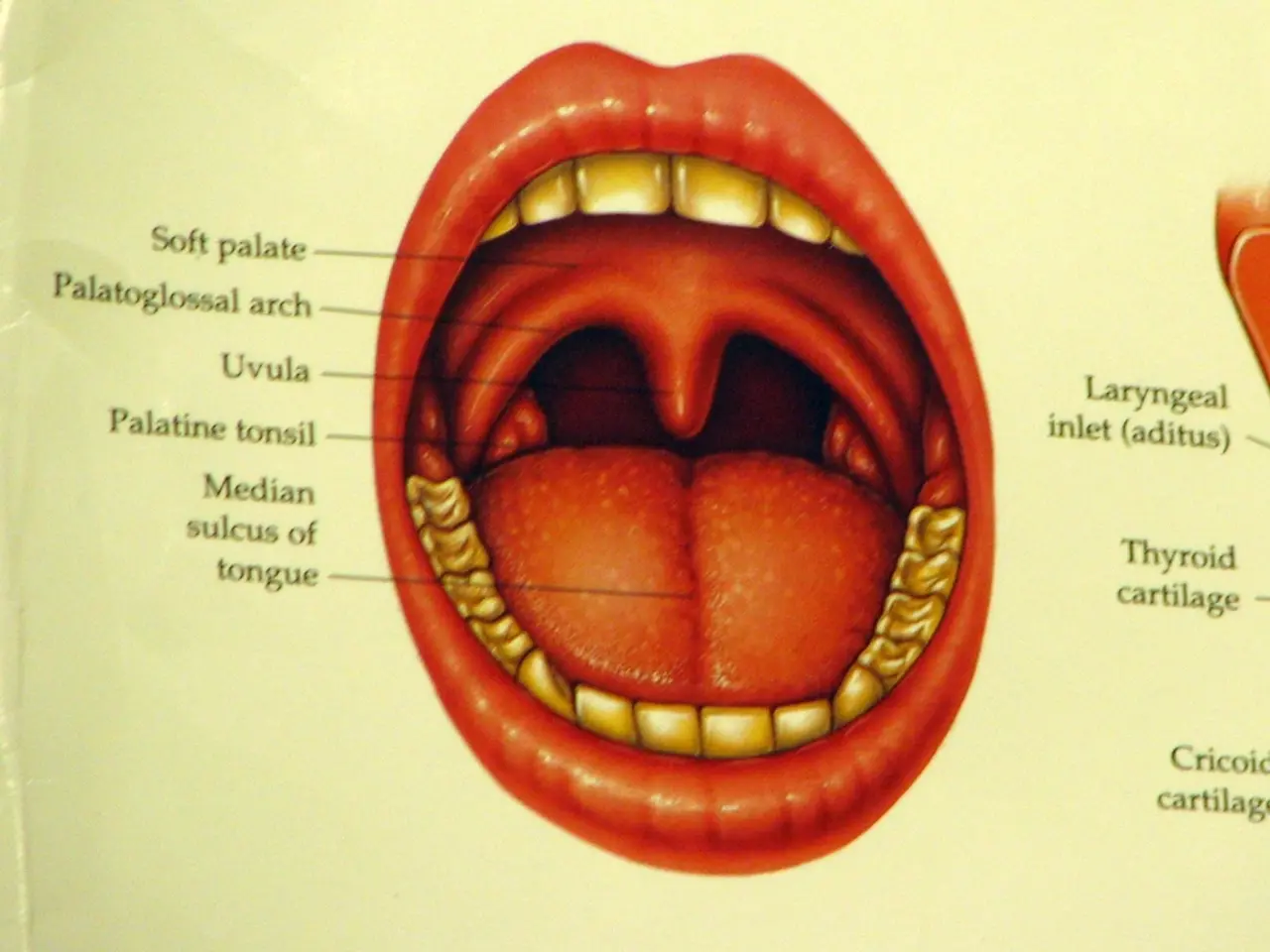Mouth Cancer and Immune System Performance
============================================================
In the battle against oral cancer, the immune system plays a crucial role. This system, designed to protect the body from harmful substances and changes, can also help detect and eliminate cancer cells. However, oral cancer often finds ways to evade and suppress these immune responses.
Oral cancers, which affect hundreds of thousands of people worldwide each year, develop in various areas including the lips, gums, tongue, and oropharynx. The main risk factors include tobacco use, alcohol consumption, viral infections, and exposure to ionizing radiation.
The immune system recognizes oral cancer cells through tumor-specific and tumor-associated antigens. However, cancer cells can escape this detection by losing these antigens or by reducing the expression of class I MHC molecules needed for recognition by cytotoxic T cells. They may also produce immunosuppressive chemicals or shed antigens that inhibit the activity of immune cells [2].
Cancer metabolism can generate abnormal metabolites that alter immune cell function and induce an immunosuppressive environment. For instance, metabolites in head and neck cancers promote the polarization of tumor-associated macrophages (TAMs) into an M2-like phenotype that fosters immunosuppression and tumor progression [1].
Another way cancer cells evade immune attack is by inducing exhaustion in CD8+ T cells, reducing their antitumor activity. In head and neck cancer, kynurenine signaling leads to CD8+ T cell dysfunction and immune suppression, weakening tumor control [1].
Immune inflammation is closely linked to oral cancer development. Pathways such as AIM2 inflammasome and cGAS-STING are involved in sensing tumor and therapy-induced cellular damage, activating immune responses that can either promote tumor clearance or contribute to tumor progression if dysregulated [5].
PANoptosis-related molecular pathways have been associated with immune responses in oral squamous cell carcinoma, affecting prognosis and tumor behavior. Genes involved in immune modulation (e.g., PD-L1 expression) are linked to tumor immune evasion, influencing patient outcomes [3].
The immune system's role in preventing oral cancer development is significant. It does this through immune surveillance, T lymphocytes, CD8+ T lymphocytes, CD4+ T lymphocytes, cytokines, natural killer (NK) cells, and dendritic cells (DCs) [4].
The most common type of oral cancer is squamous cell carcinoma, accounting for around 90% of all cases. Despite the immune system's efforts, oral cancer often finds ways to evade and suppress these immune responses, making it crucial to understand these mechanisms for improving immunotherapies and personalized treatments [1][2][3][5].
References:
[1] Kalluri, R., & LeBleu, J. (2015). Cancer immunotherapy: tumor microenvironment and immune escape. Nature reviews cancer, 15(9), 551-568.
[2] Schreiber, S. B., & Weich, S. (2017). Evasion of the immune system by cancer cells. Nature reviews cancer, 17(3), 179-192.
[3] Zhang, Y., & Zhang, L. (2019). Immune-related genes and their potential roles in oral squamous cell carcinoma. Journal of immunology research, 2019, 1-10.
[4] Kato, Y. (2016). Mechanisms of immune evasion in oral cancer. Journal of oral pathology & medicine, 45(1), 15-25.
[5] Wang, X., & Zhang, Y. (2018). The role of inflammation in the development and progression of oral squamous cell carcinoma. Journal of oral pathology & medicine, 47(10), 866-878.
- The immune system's role in recognizing and potentially eliminating oral cancer cells is significant, but cancer cells have ways to evade these responses, such as reducing the expression of class I MHC molecules needed for recognition by cytotoxic T cells.
- Understanding the mechanisms by which oral cancer cells evade immune responses is crucial for improving immunotherapies and personalized treatments, as oral cancer, including squamous cell carcinoma, often finds ways to suppress these responses.
- Immune inflammation is closely linked to oral cancer development, and pathways such as AIM2 inflammasome and cGAS-STING are involved in sensing tumor and therapy-induced cellular damage, activating immune responses that can either promote tumor clearance or contribute to tumor progression if dysregulated.
- The immune system's efforts in preventing oral cancer development are supported by various components, including T lymphocytes, CD8+ T lymphocytes, CD4+ T lymphocytes, cytokines, natural killer (NK) cells, and dendritic cells (DCs), demonstrating the importance of maintaining health and wellness, including mental health, for cancer prevention and treatment.




